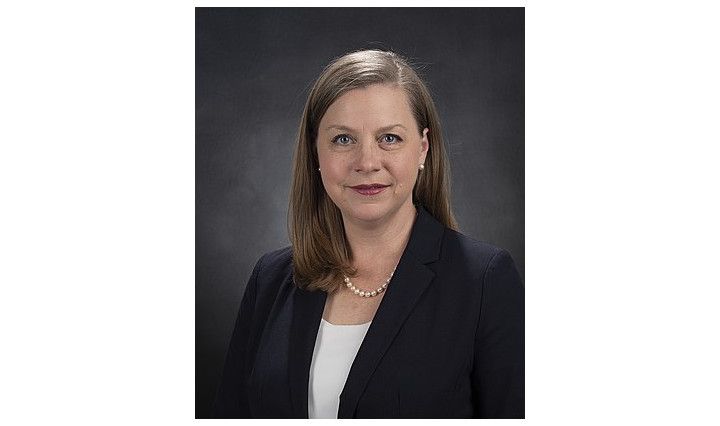Fed Governor Michelle Bowman: "I am also monitoring the potential financial stability implications of nonperforming CRE loans that are packaged as part of commercial mortgage-backed securities (CMBS)."


Interesting Comments:
Commercial real estate
"I am also monitoring the potential financial stability implications of nonperforming CRE loans that are packaged as part of commercial mortgage-backed securities (CMBS). It is much more difficult to restructure a nonperforming loan that is part of a CMBS pool when compared with nonperforming loans held directly by the lender. Pooled CMBS investments are often held in significant volumes or in concentrated shares by institutions that include large insurance companies and pension plans. Were these institutions to suffer significant losses on their CMBS holdings, there could be broader effects on the securitization pipeline for CMBS and on the CRE market."
"there is still a risk that a decline in property values, reduced rental income cash flows, or other shocks could impair CRE portfolios, especially if those loans mature and are refinanced at higher interest rates."
"some banks with large undiversified and geographically concentrated CRE portfolios may be at greater risk."
Banking Sector
"Banks relying on more expensive deposits and that also have large holdings of long-term assets like longer-dated loans or securities with low, fixed rates will likely continue to experience a drag on earnings, especially if interest rates stay higher for longer."
"Should a bank be forced to sell long-term assets, the realized losses can negatively impact regulatory capital. A rising interest rate environment may also erode the credit quality of bank loan portfolios should economic activity and incomes soften, posing an additional source of risk to bank earnings and capital."
Nonbank financial institutions
"Hedge fund leverage remains elevated and prime money market funds, insurance companies, and some corporate bond mutual funds remain vulnerable to run risks. In addition to this risk, it is also important to monitor the interest rate and funding vulnerabilities of these entities in the current macroeconomic and interest rate environment."
U.S. Treasury Markets
"It will be important to watch for signs of impaired Treasury market functioning, especially as the Federal Reserve continues to reduce its holdings of Treasury securities and Treasury auction volumes expand to meet issuance needs."
Designing and Calibrating Policies to Promote Financial Stability
"Should financial stability risks be realized, it may become necessary to implement central bank and other targeted emergency liquidity or lending facilities. A central bank's implementation of monetary policy may influence the financial stability risks that are most salient. In many jurisdictions, including the United States, financial stability tools separate and distinct from monetary policy tools may be most effective to mitigate and address financial stability risks. The separation of these tools can allow monetary policy decisionmaking to remain focused on achieving central bank monetary policy goals."
Balance of bank supervision and regulation
"To effectively support financial stability, bank supervision cannot simply rely on pinpointing compliance issues, failed processes, or rule violations. It must go further to examine a bank's risk exposures while prioritizing core safety and soundness issues in the context of the bank's financial condition."
"While some changes to the regulatory framework may be appropriate to promote financial stability, we should be careful to ensure that changes do not harm the long-term viability of banks, especially midsized and smaller banks."
"In my view, regulatory reform can pose significant financial stability risks, particularly if those changes to regulation fail to take sufficient account of the incentive effects and potential consequences."
"Regulatory approaches in the banking sector must also allow for innovation. Inhibiting innovation in the banking sector could push growth of certain products and services further into the nonbank sector, leading to much less transparency and potentially greater financial stability risk."
Central bank liquidity provision and lending facilities
"Should financial stability risks materialize, central banks must be prepared to provide targeted liquidity to financial institutions during times of stress to restore market functioning and financial stability."
"In the banking system, it is also important that tools to support bank liquidity and payments—including discount window operations and Fedwire® within the Federal Reserve—are available for extended operating hours and are prepared to provide support during times of stress. We should also consider what further steps are needed to ensure that banks have access to liquidity support."
💭
There is quite a bit to react to from Governor Bowman's comments.
Her comments on Commercial real estate (CRE) make it sound like 08 is setting up for banks just on the commercial side?
Turning to the banking sector, her comments around banks earnings taking a drag sure make the Bank Term Funding Program look more and more like a blatant rescue of banks balance sheets...
Hedge fund leverage is called out as elevated and all of the private market remains vulnerable to run risks.
I find her comments around promoting financial stability to be hollow. Especially when JUST THE OTHER DAY she said:
"growing importance of nonbank lending suggest that monetary policy may have smaller effects on bank lending and the economy than in the past."
It is peculiar for Governor Bowman to readily admit that nonbank aka ‘Shadow Banks’ have neutered the Fed's ability to render monetary policy. The nonbank financial system now controls $239 trillion, or almost half of the world’s financial assets, according to the Financial Stability Board. That’s up from 42% in 2008, and has doubled since the 2008-09 financial crisis. Postcrisis regulations helped shore up the nation’s biggest banks, but the restrictions that were imposed, coupled with years of ultralow interest rates, fueled the explosive growth of nonbank finance and now we have Governor Bowman admitting monetary policy is no longer working as intended but at the same time, in this speech, telling us everything is 'strong' and 'resilient'.
Can she really know this though?
From the post I linked:
"Yet, no one seems to have a firm handle on the risks that nonbank financial entities could pose if numerous trades and investments sour. Nor is there a detailed understanding of the connections among nonbank entities, or their links to the regulated banking system."
"To date, this system hasn’t been tested, at this scale, for a wave of credit losses and defaults that could stem from higher rates and a weakening economy. History suggests caution: Shadow banking was at the epicenter of the financial crisis, as nontraditional financial institutions turned subprime mortgages into complex securities sold to banks and investors, often using high levels of leverage. As homeowners defaulted, these products lost value, and the damage cascaded through the financial system."
Lastly, Governor Bowman's comments around regulating banks CLEALY shows she places their blances sheets over actual financial stability:
"While some changes to the regulatory framework may be appropriate to promote financial stability, we should be careful to ensure that changes do not harm the long-term viability of banks"
Her comments on Commercial real estate (CRE) make it sound like 08 is setting up for banks just on the commercial side?
Turning to the banking sector, her comments around banks earnings taking a drag sure make the Bank Term Funding Program look more and more like a blatant rescue of banks balance sheets...
Hedge fund leverage is called out as elevated and all of the private market remains vulnerable to run risks.
I find her comments around promoting financial stability to be hollow. Especially when JUST THE OTHER DAY she said:
"growing importance of nonbank lending suggest that monetary policy may have smaller effects on bank lending and the economy than in the past."
It is peculiar for Governor Bowman to readily admit that nonbank aka ‘Shadow Banks’ have neutered the Fed's ability to render monetary policy. The nonbank financial system now controls $239 trillion, or almost half of the world’s financial assets, according to the Financial Stability Board. That’s up from 42% in 2008, and has doubled since the 2008-09 financial crisis. Postcrisis regulations helped shore up the nation’s biggest banks, but the restrictions that were imposed, coupled with years of ultralow interest rates, fueled the explosive growth of nonbank finance and now we have Governor Bowman admitting monetary policy is no longer working as intended but at the same time, in this speech, telling us everything is 'strong' and 'resilient'.
Can she really know this though?
From the post I linked:
"Yet, no one seems to have a firm handle on the risks that nonbank financial entities could pose if numerous trades and investments sour. Nor is there a detailed understanding of the connections among nonbank entities, or their links to the regulated banking system."
"To date, this system hasn’t been tested, at this scale, for a wave of credit losses and defaults that could stem from higher rates and a weakening economy. History suggests caution: Shadow banking was at the epicenter of the financial crisis, as nontraditional financial institutions turned subprime mortgages into complex securities sold to banks and investors, often using high levels of leverage. As homeowners defaulted, these products lost value, and the damage cascaded through the financial system."
Lastly, Governor Bowman's comments around regulating banks CLEALY shows she places their blances sheets over actual financial stability:
"While some changes to the regulatory framework may be appropriate to promote financial stability, we should be careful to ensure that changes do not harm the long-term viability of banks"

TLDRS:
Fed Governor Michelle Bowman:
- "I am also monitoring the potential financial stability implications of nonperforming CRE loans that are packaged as part of commercial mortgage-backed securities (CMBS)."
- "some banks with large undiversified and geographically concentrated CRE portfolios may be at greater risk."
- "Hedge fund leverage remains elevated and prime money market funds, insurance companies, and some corporate bond mutual funds remain vulnerable to run risks. In addition to this risk, it is also important to monitor the interest rate and funding vulnerabilities of these entities in the current macroeconomic and interest rate environment."
- "While some changes to the regulatory framework may be appropriate to promote financial stability, we should be careful to ensure that changes do not harm the long-term viability of banks"



